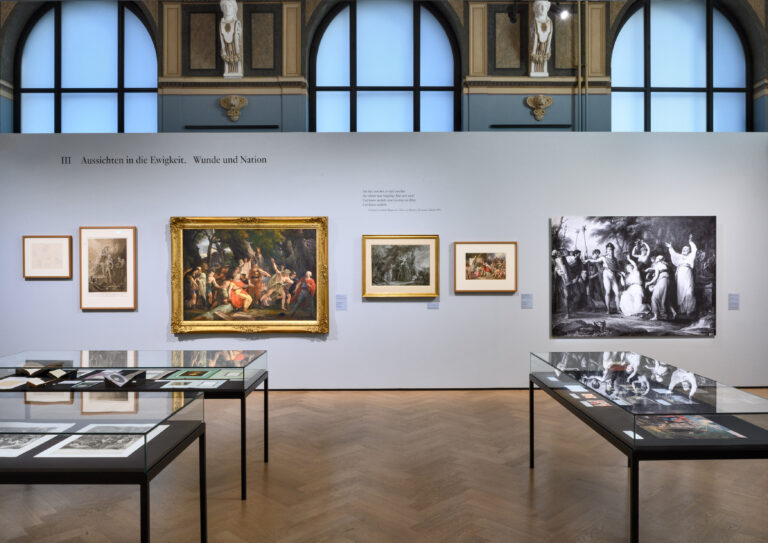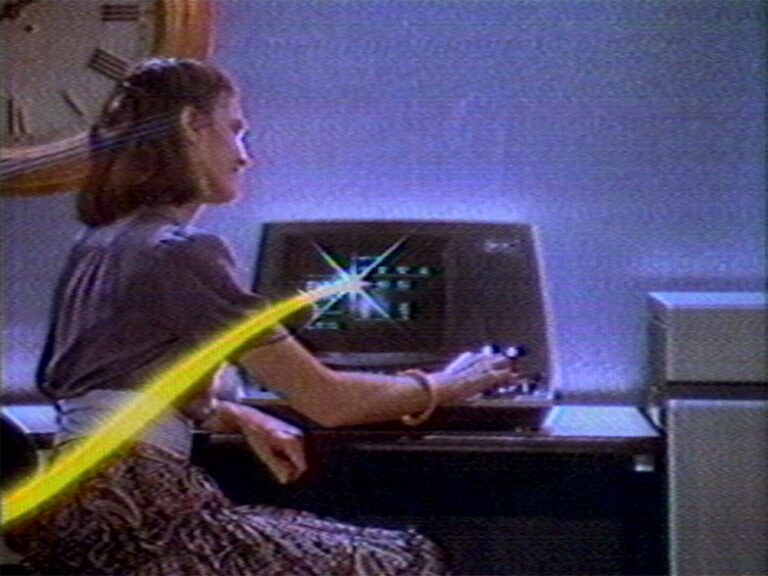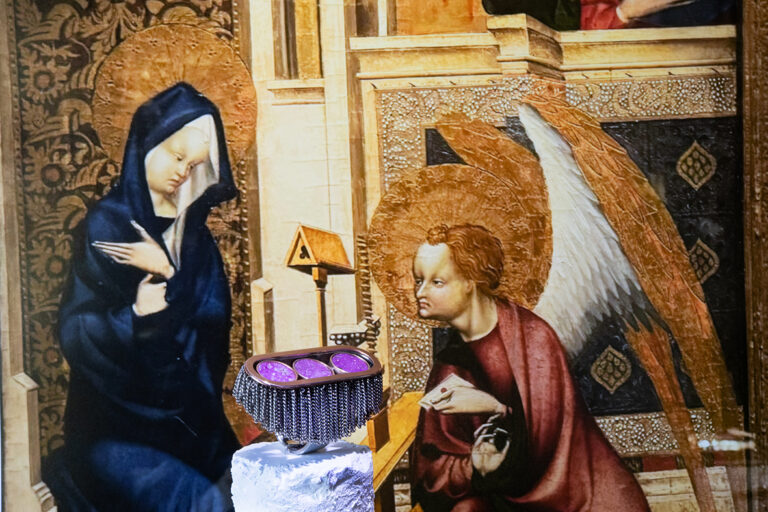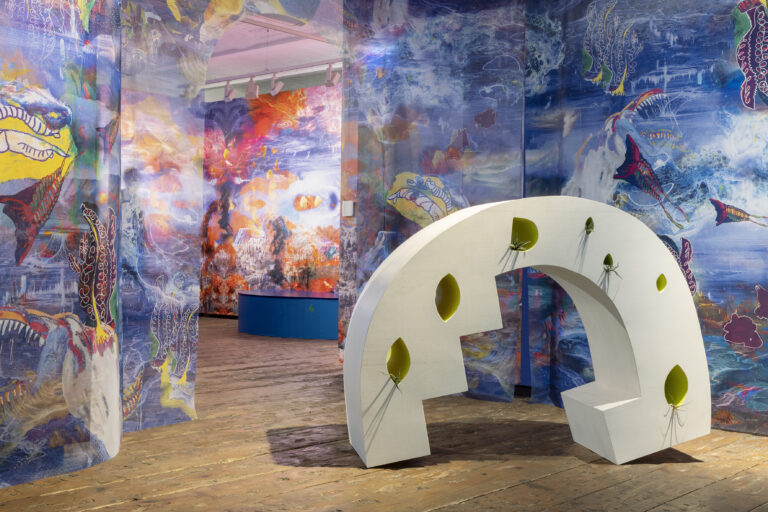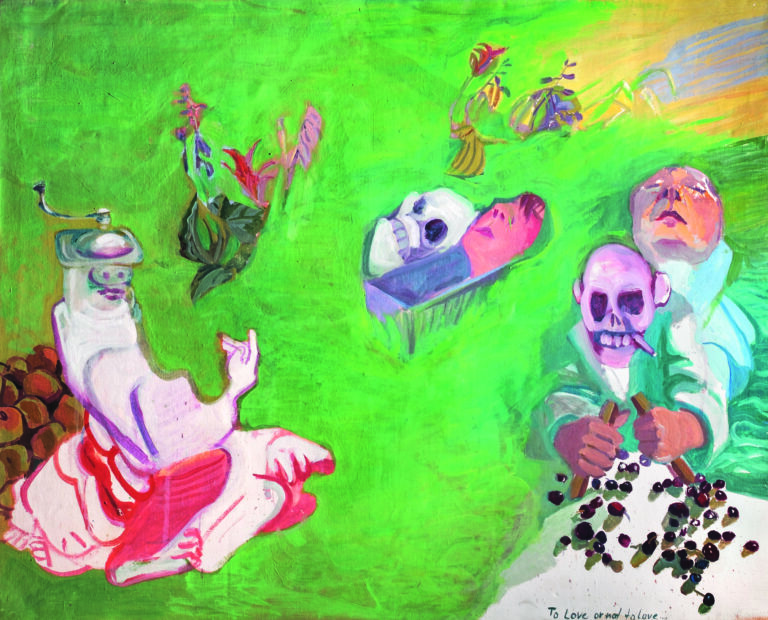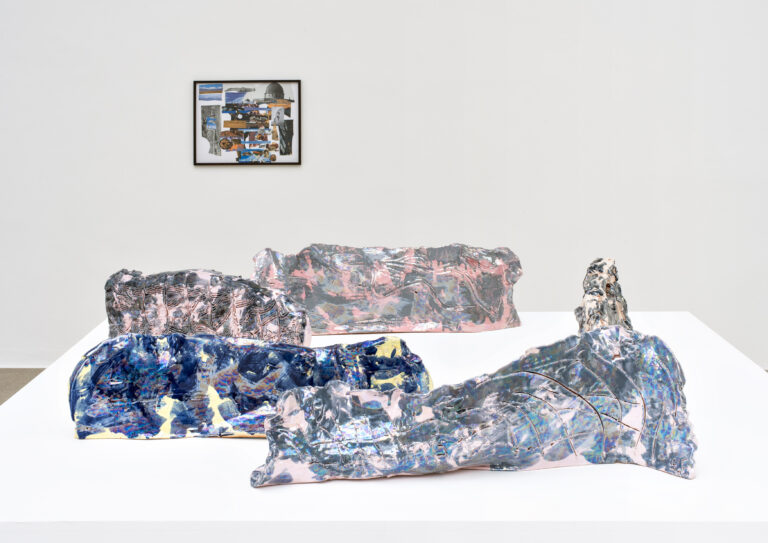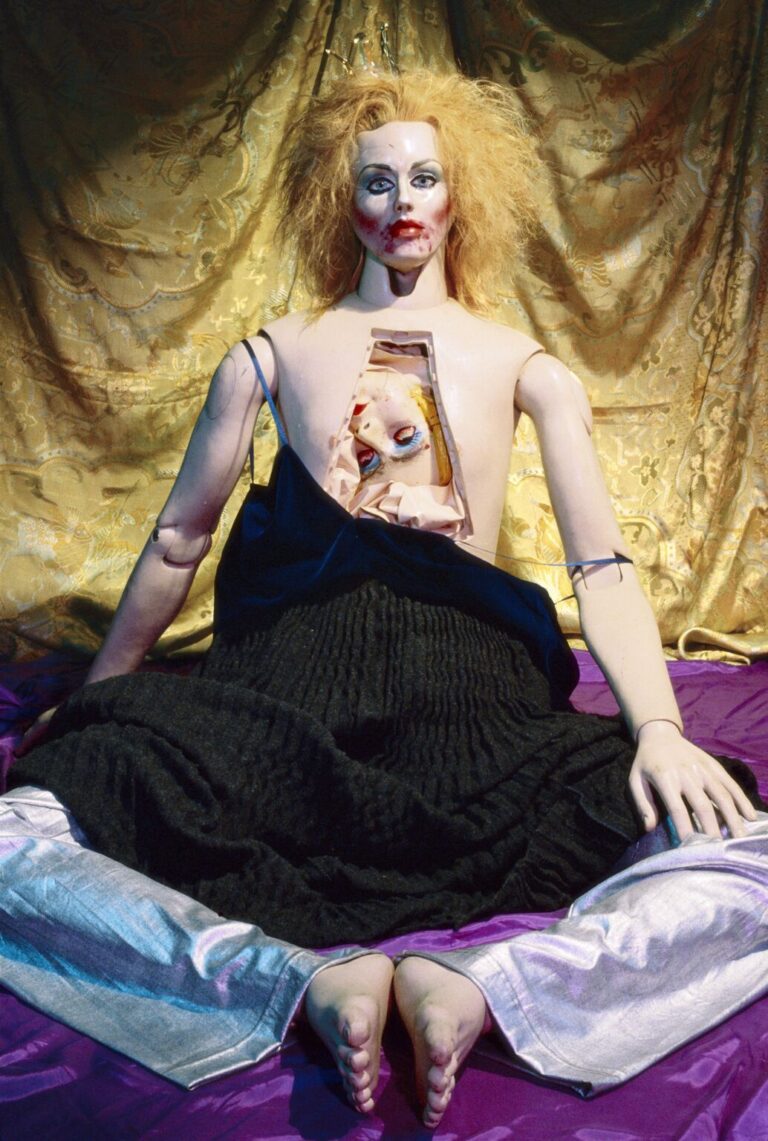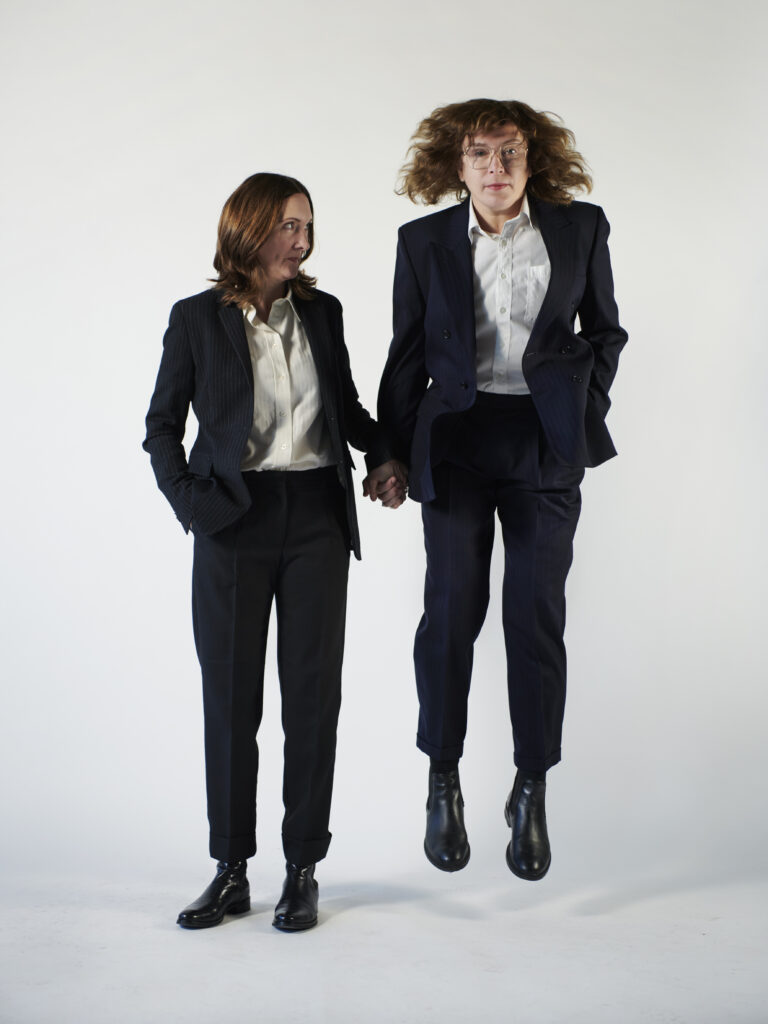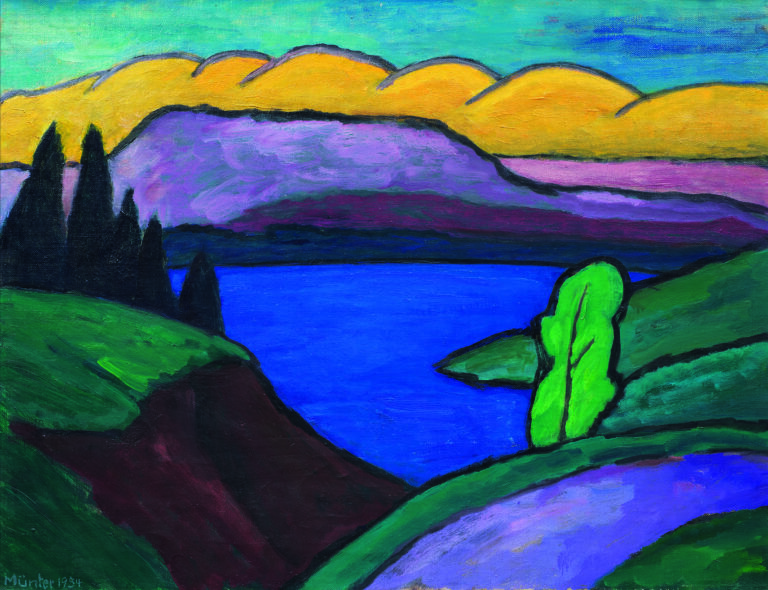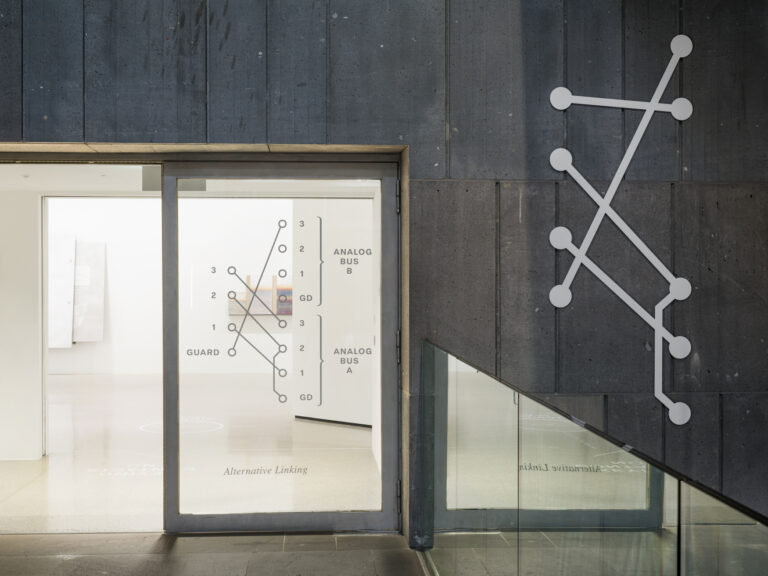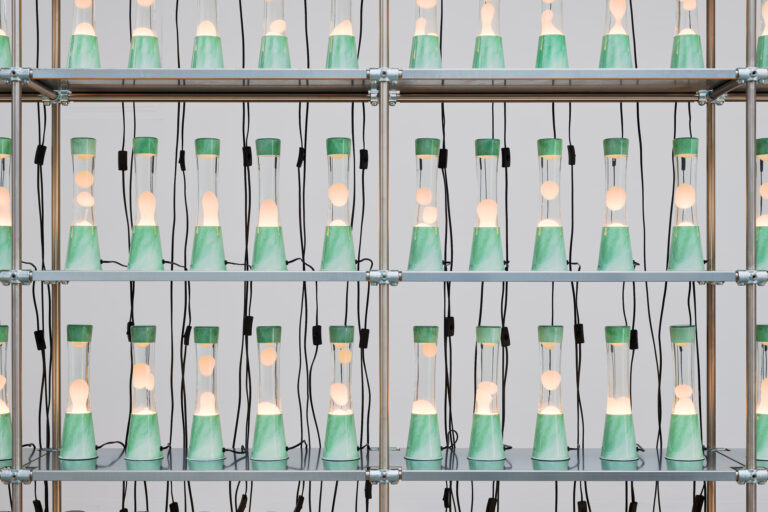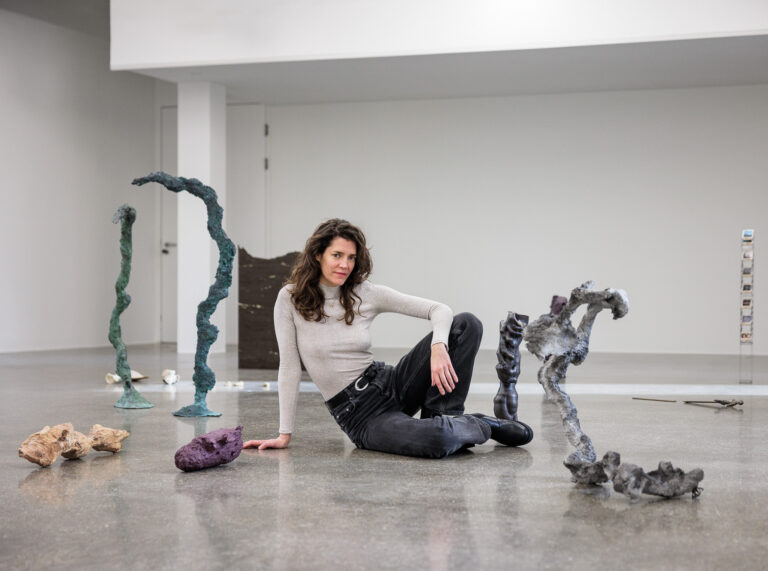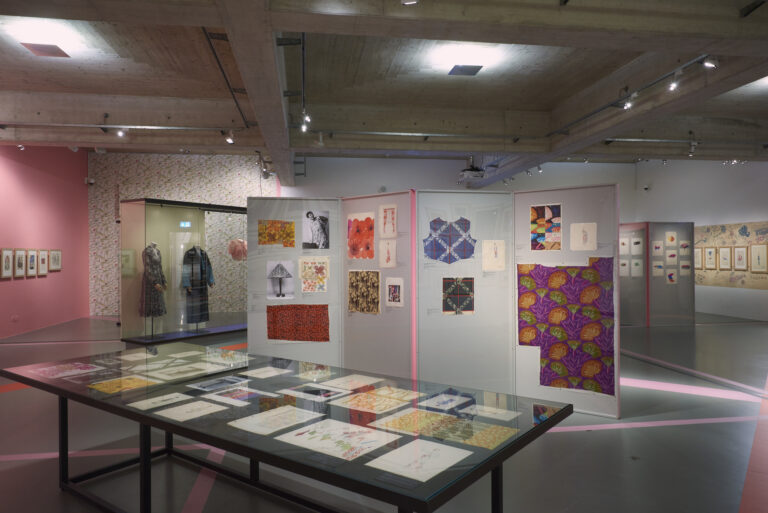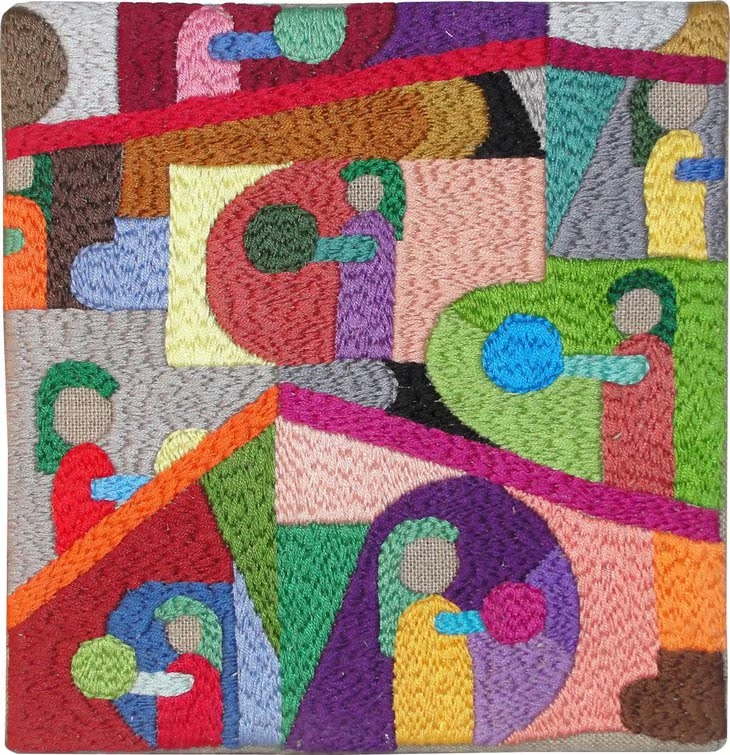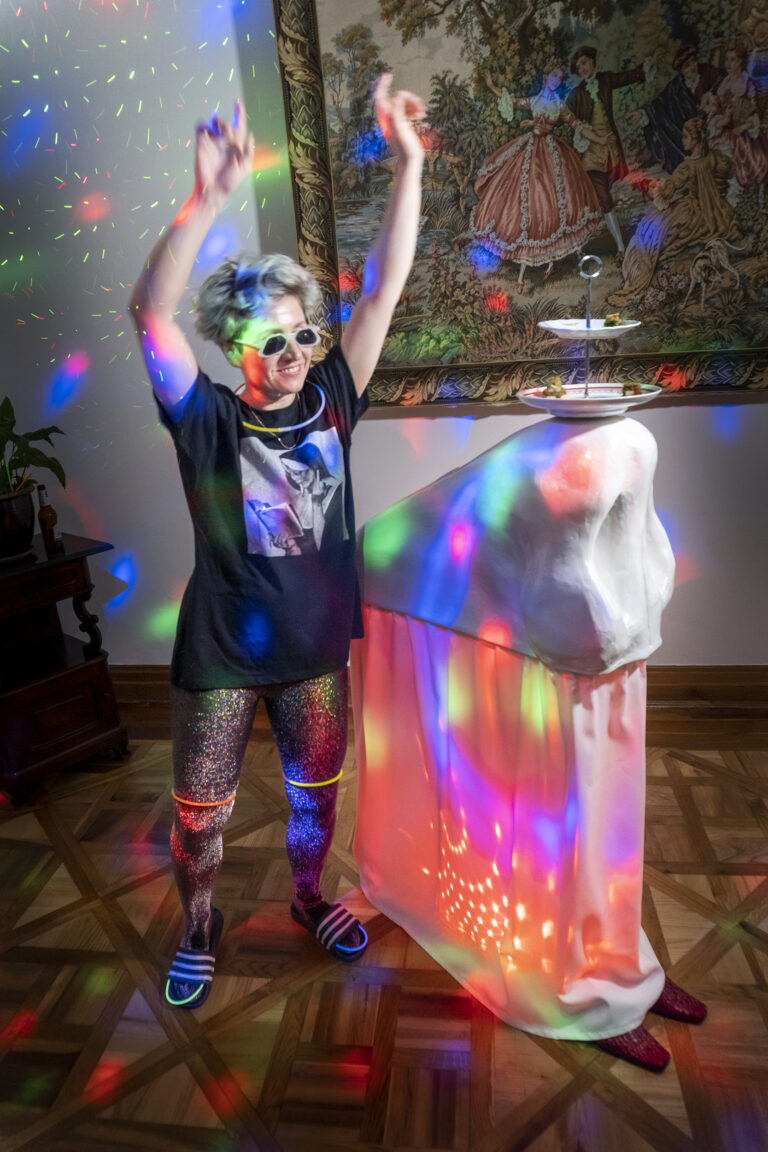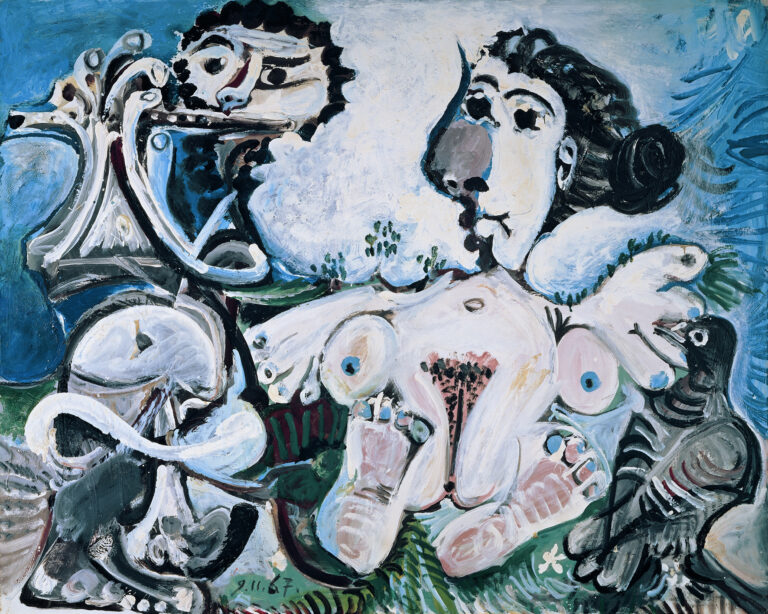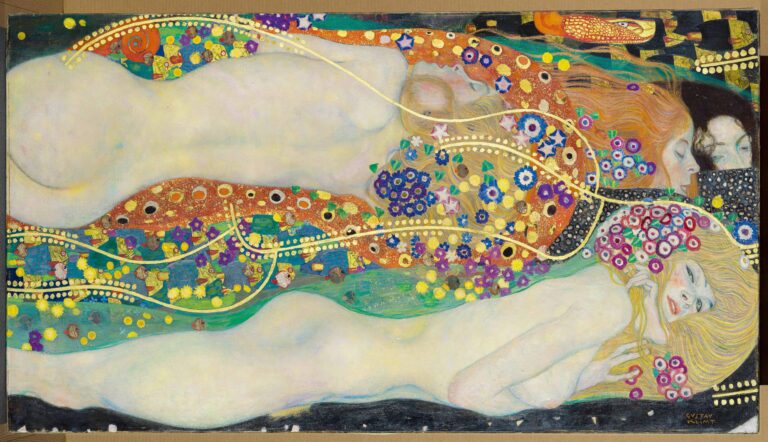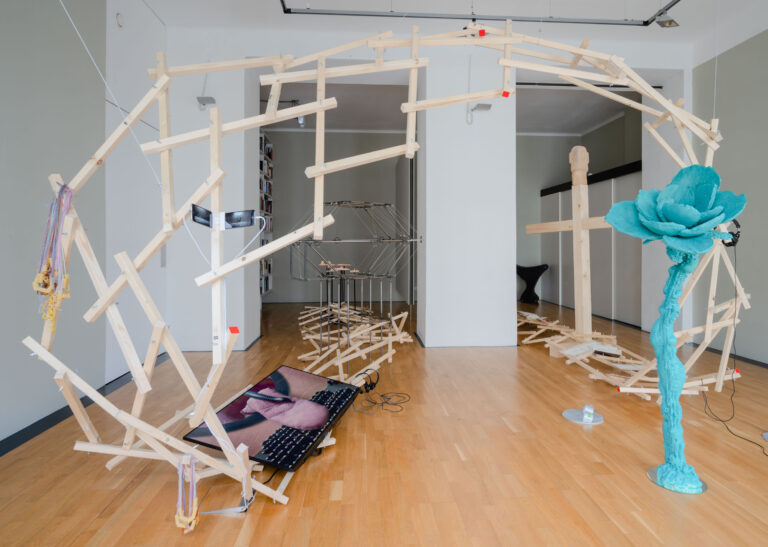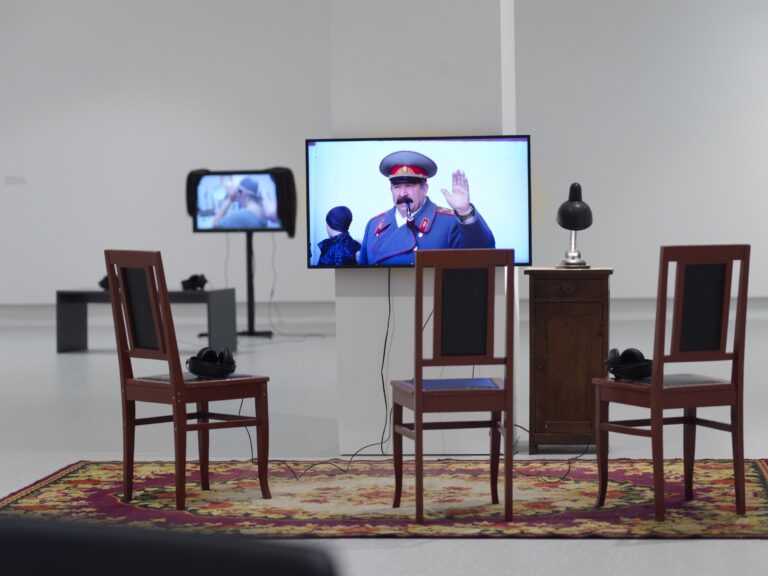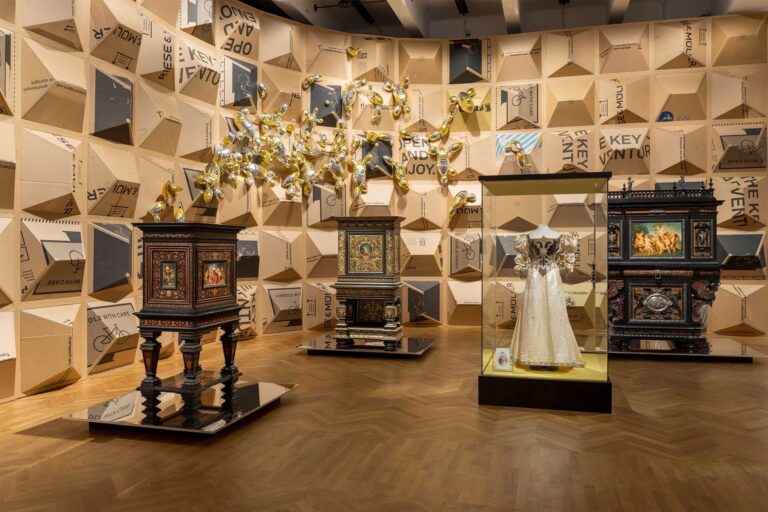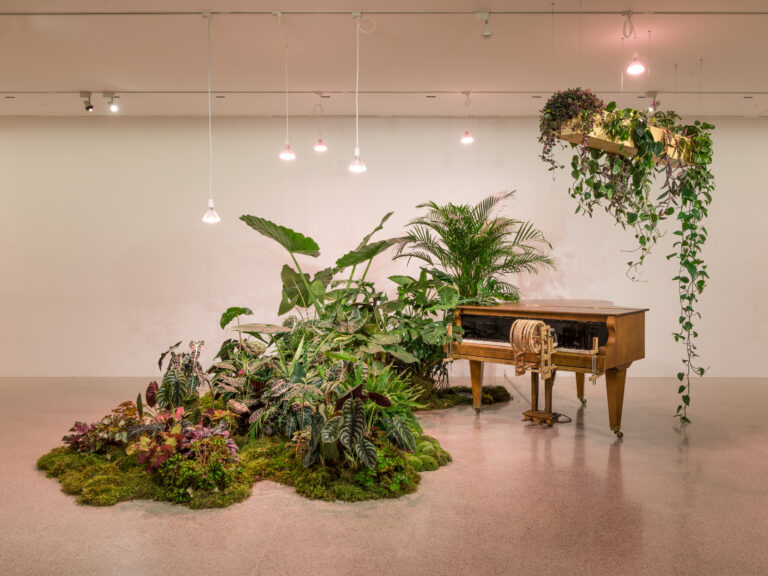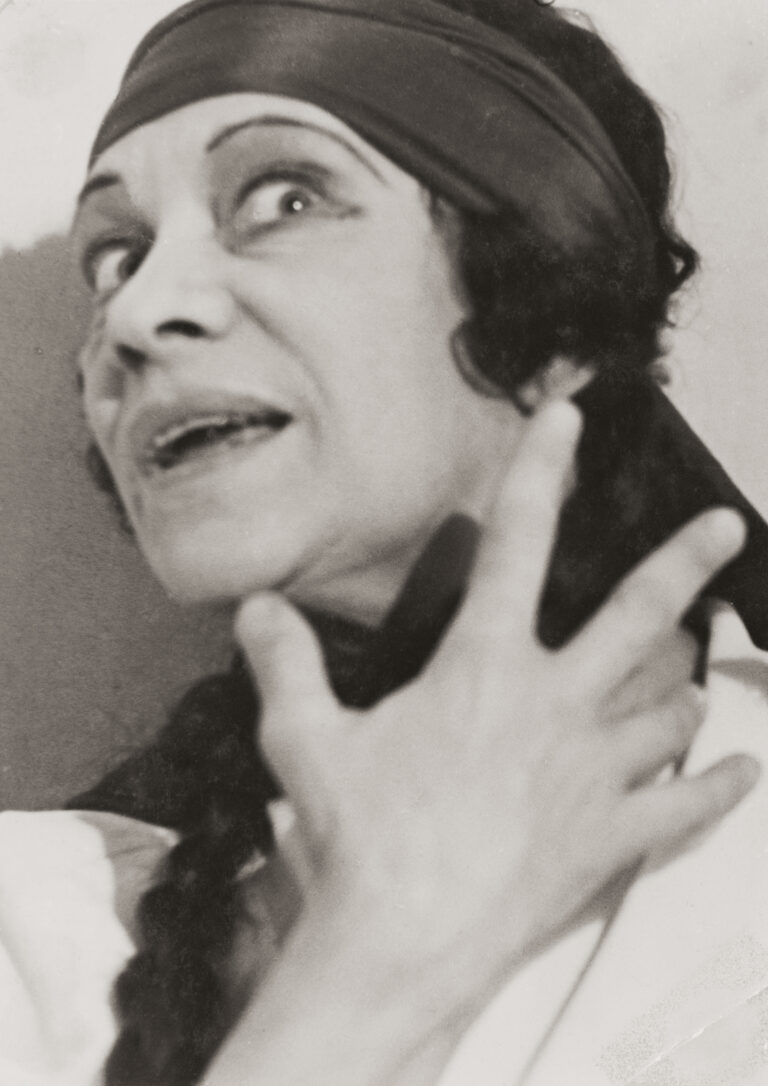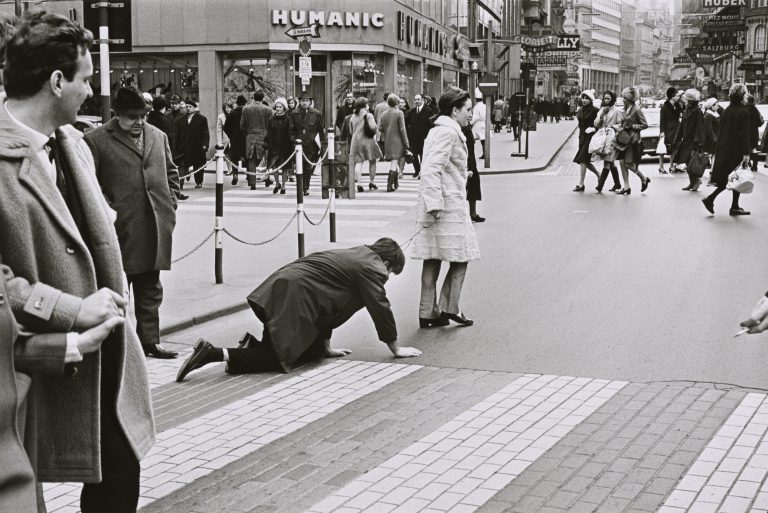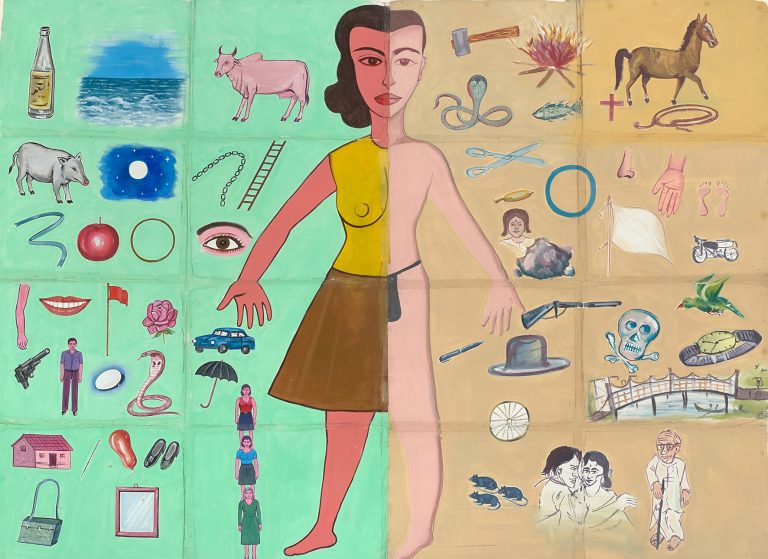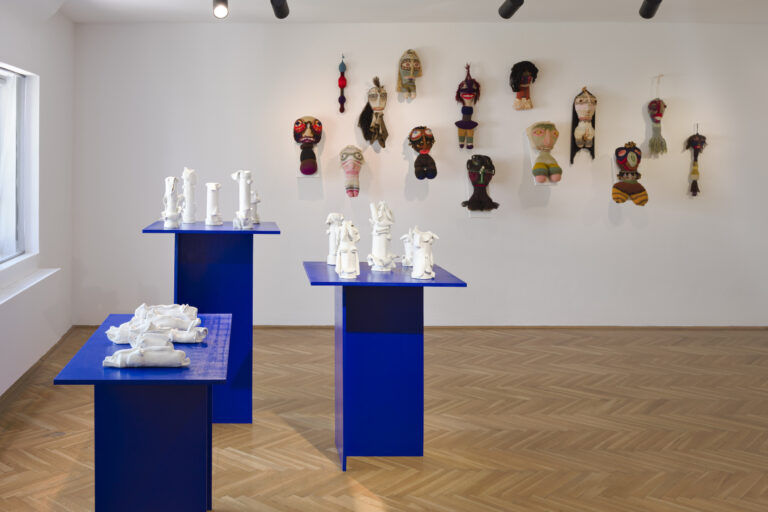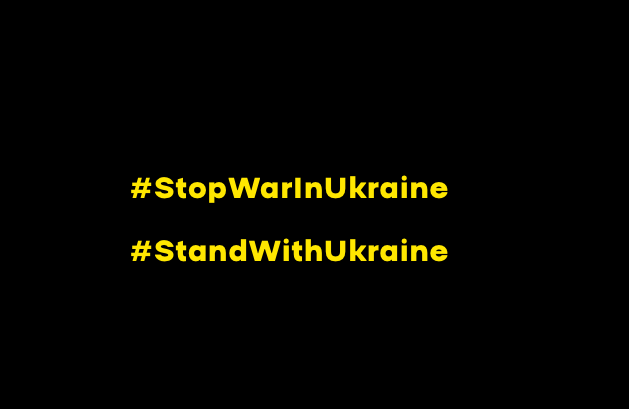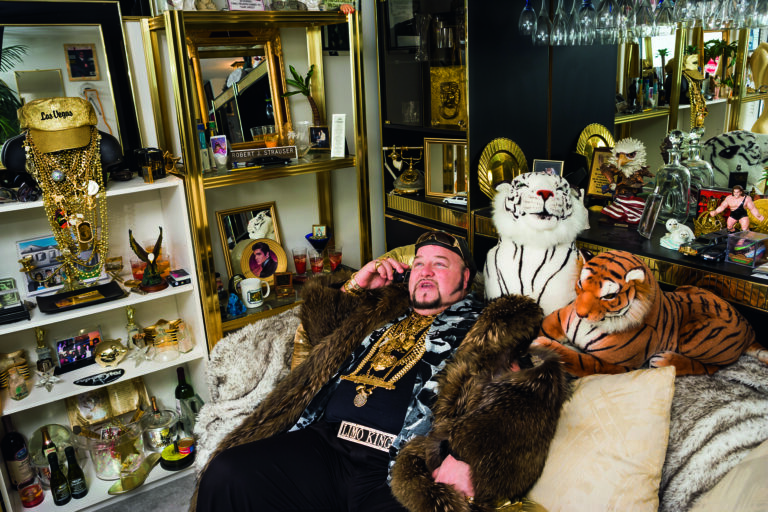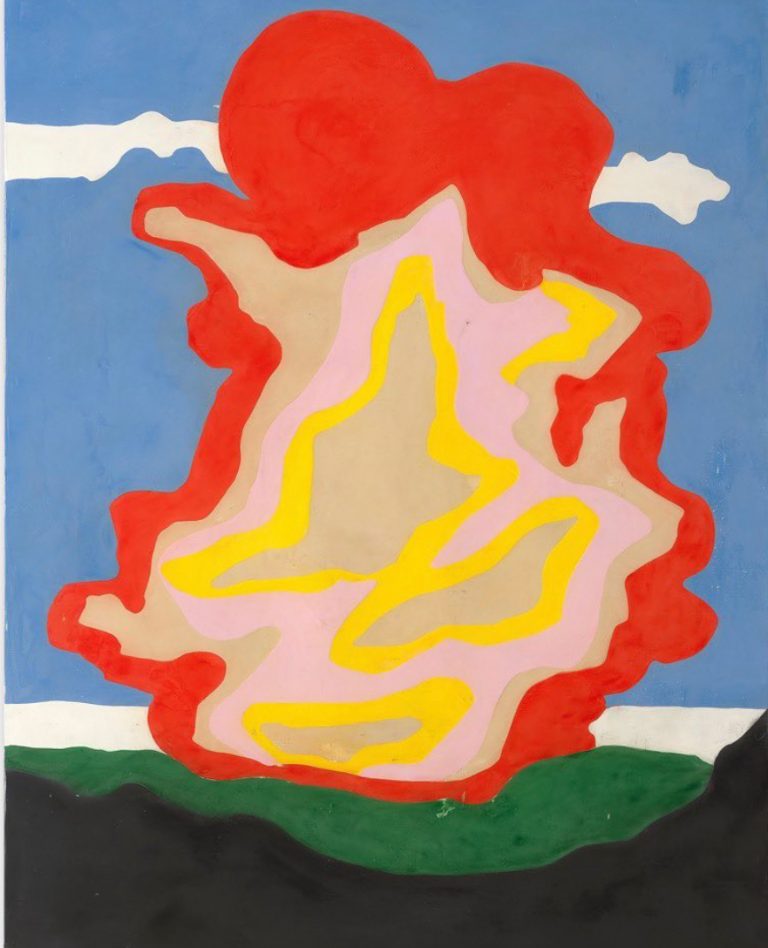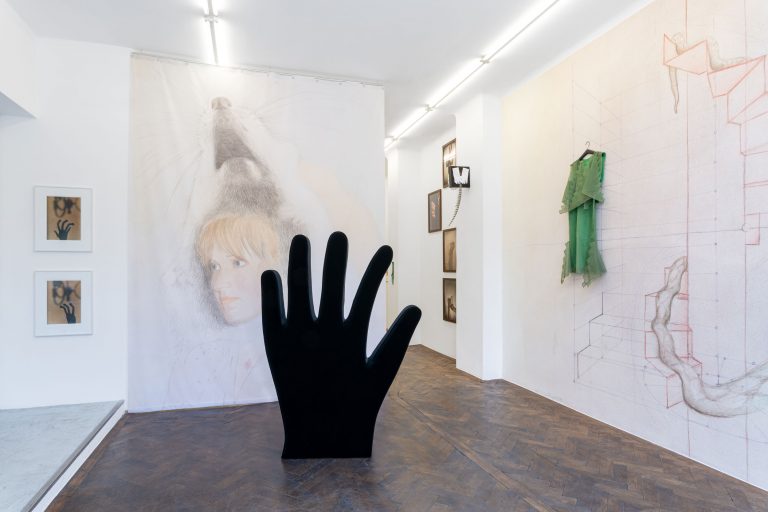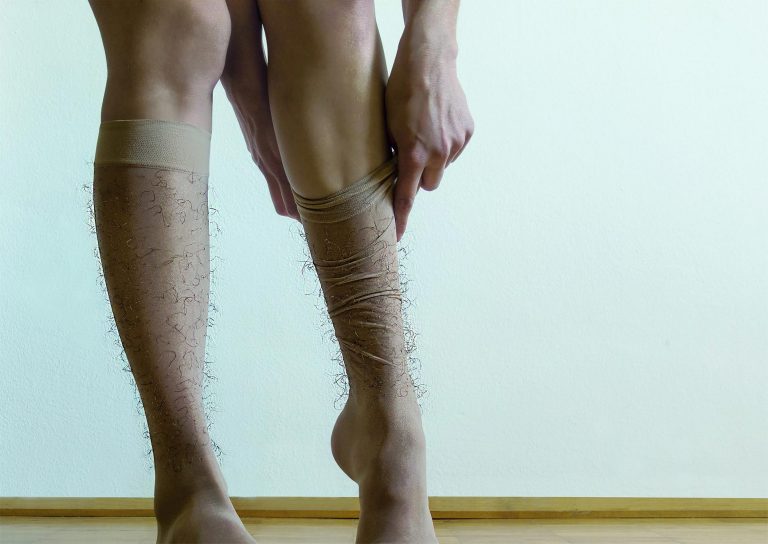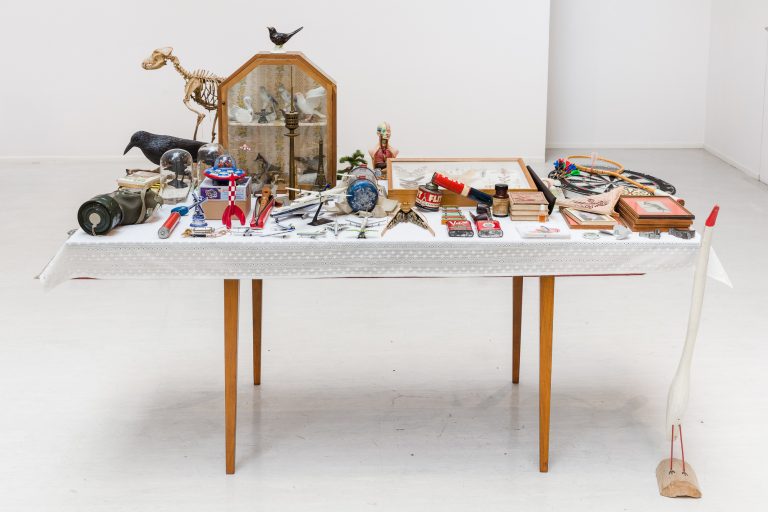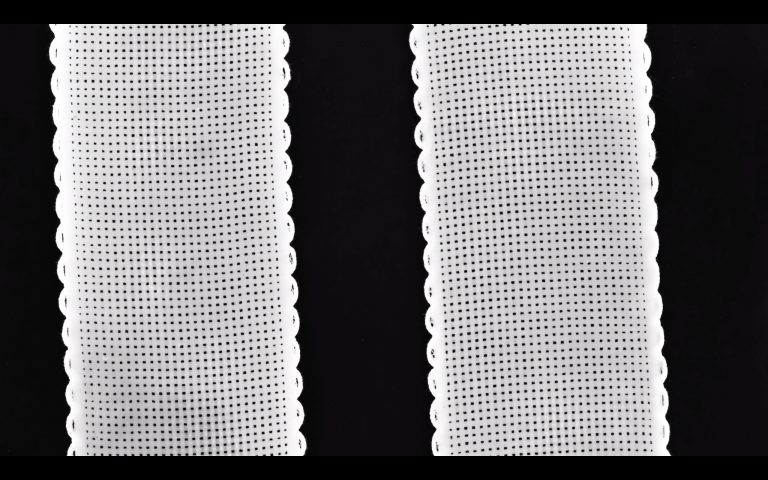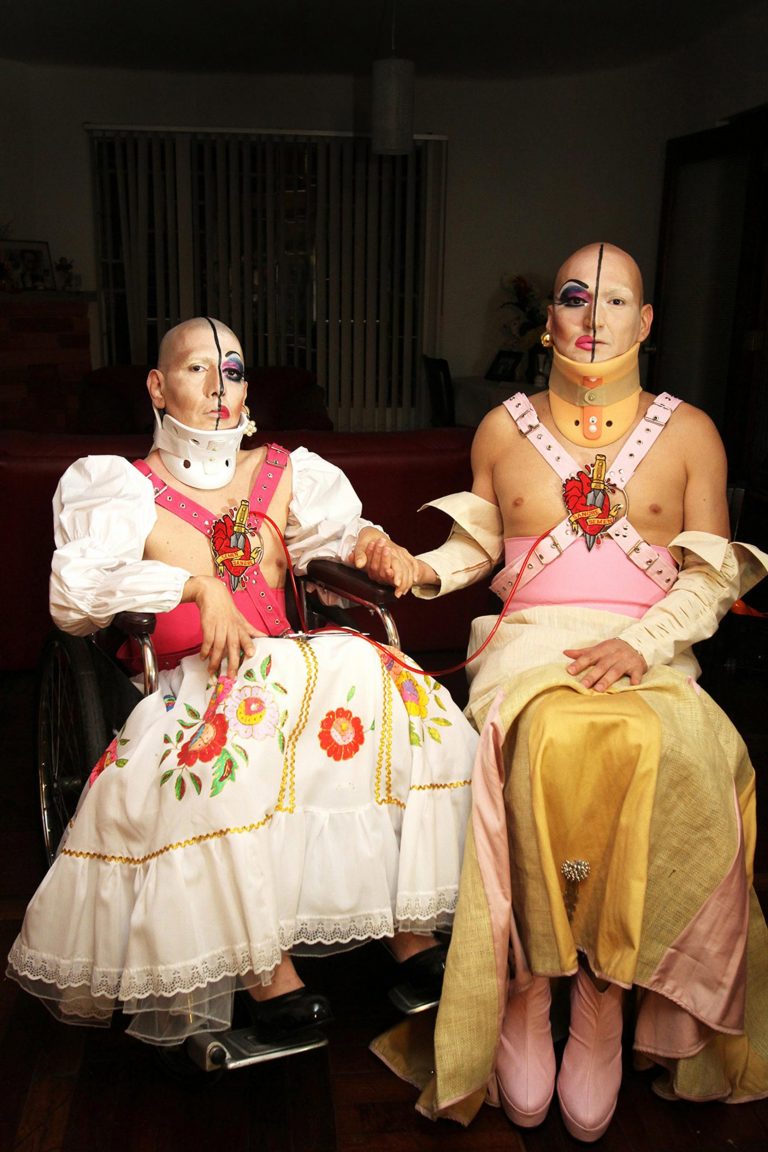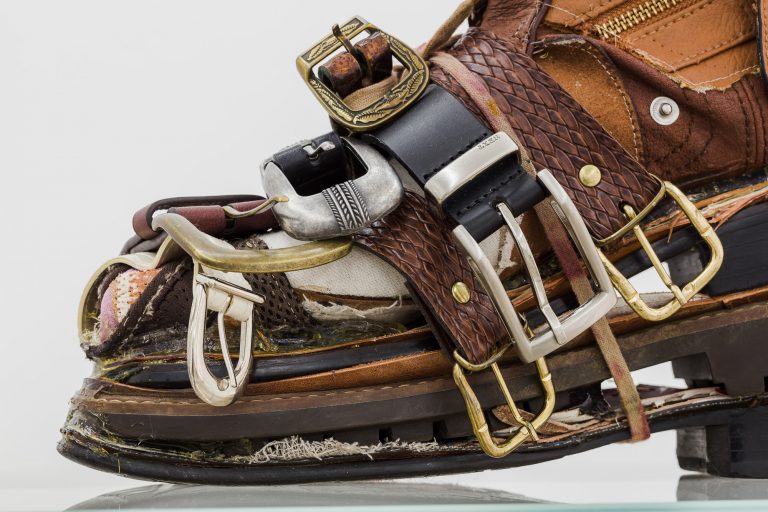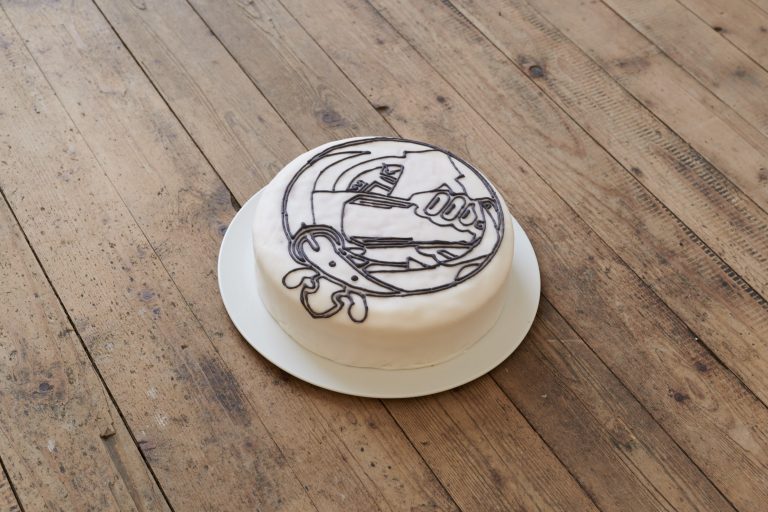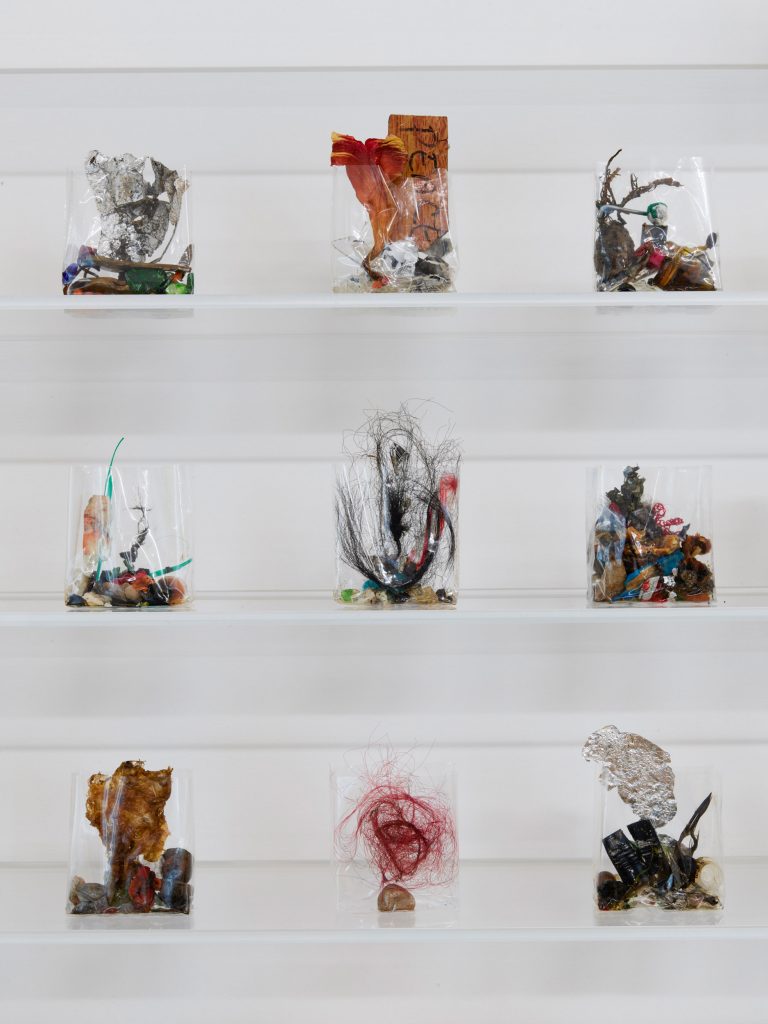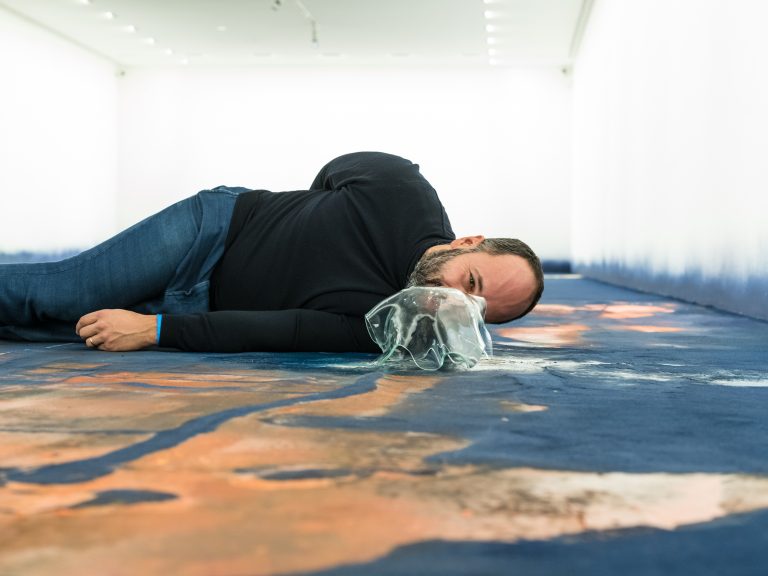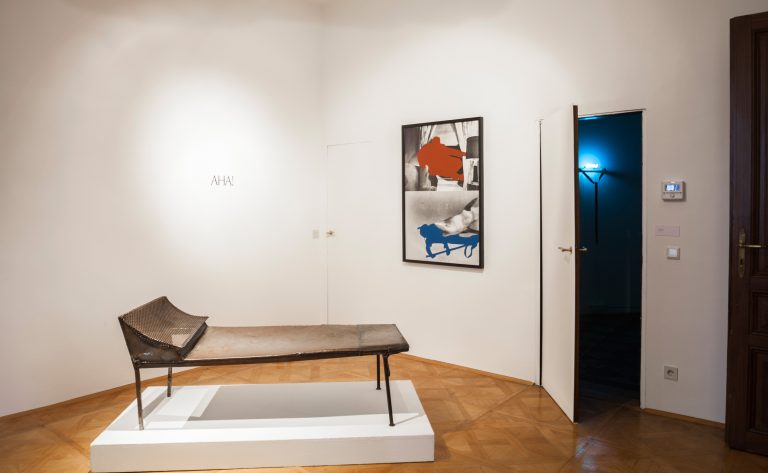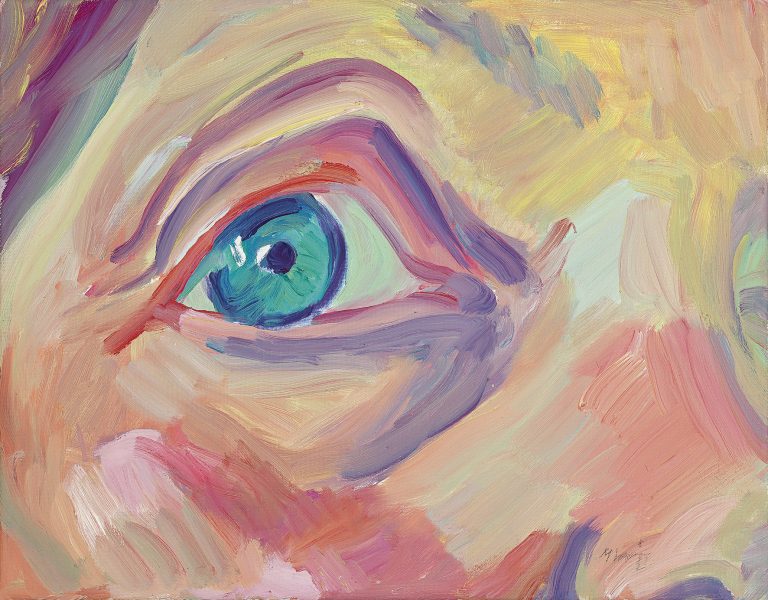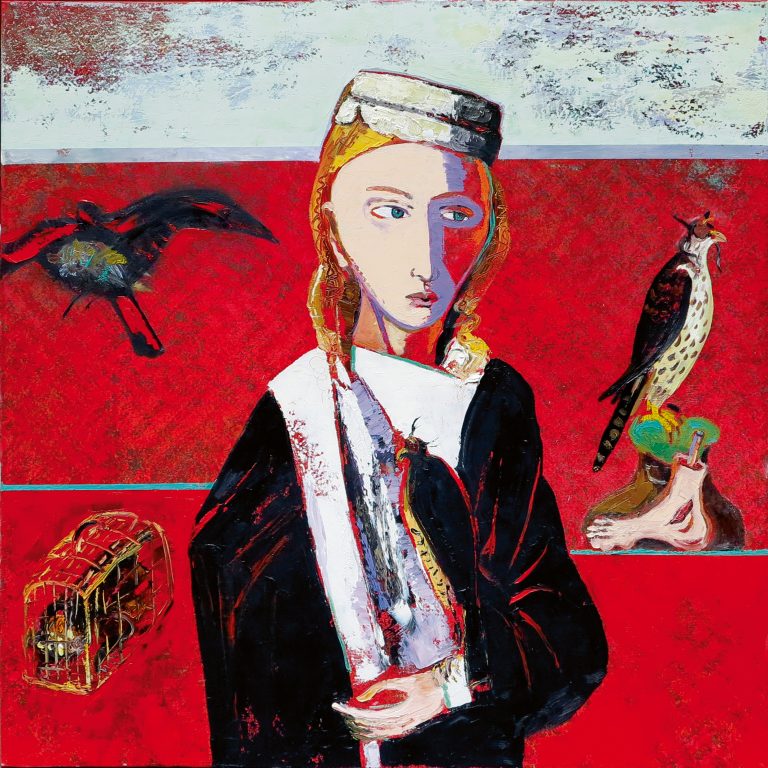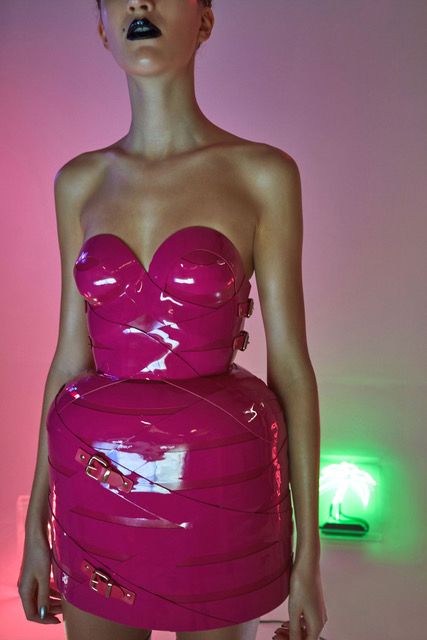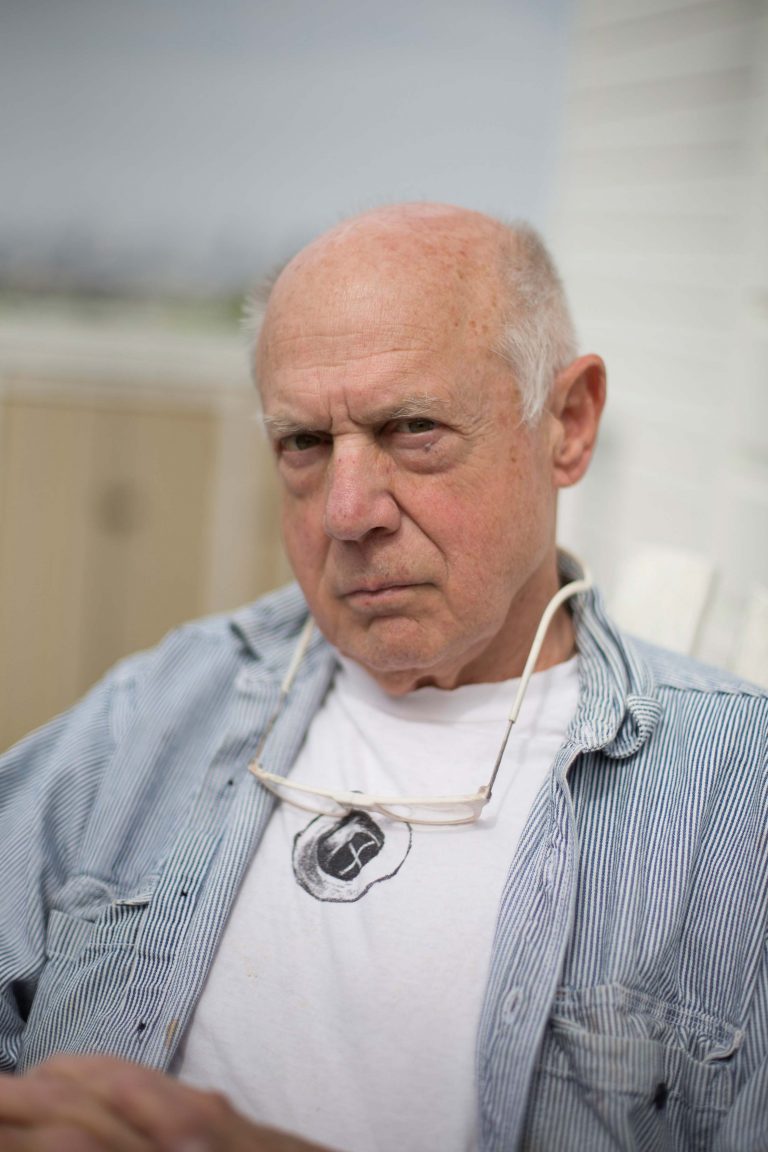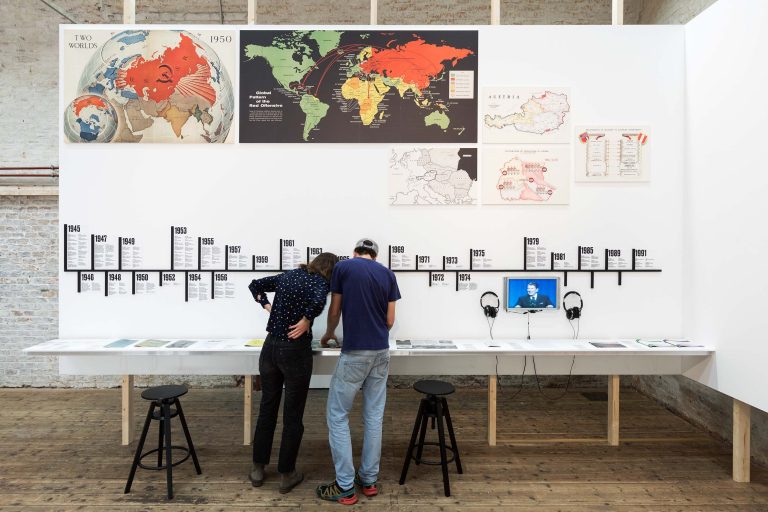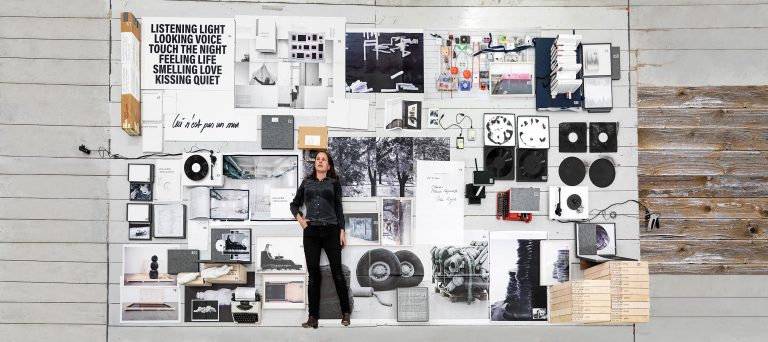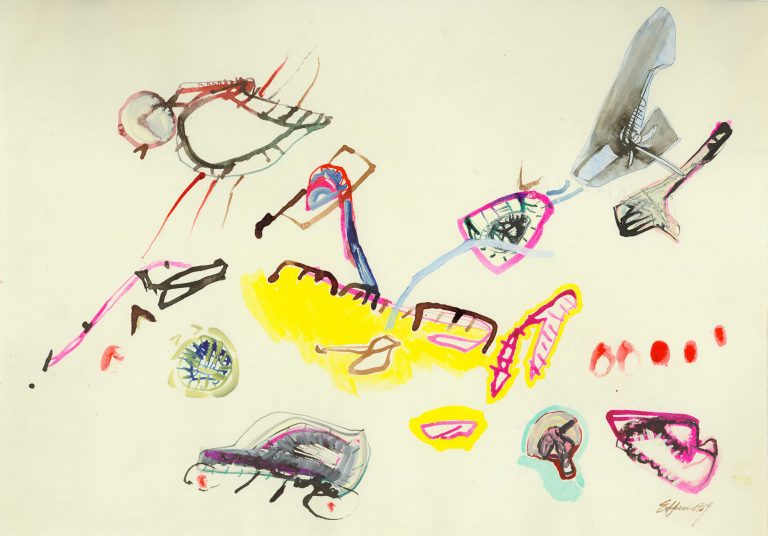Sisterhood – Ines Doujak at GALERIE3, Vienna
Ines Doujak illuminates themes such as female solidarity, classism and queerness in dense fantasy worlds, sculptures, photographs and assemblages. Sabine B. Vogel dropped by at GALERIE3 at Schleifmühlgasse in Vienna.
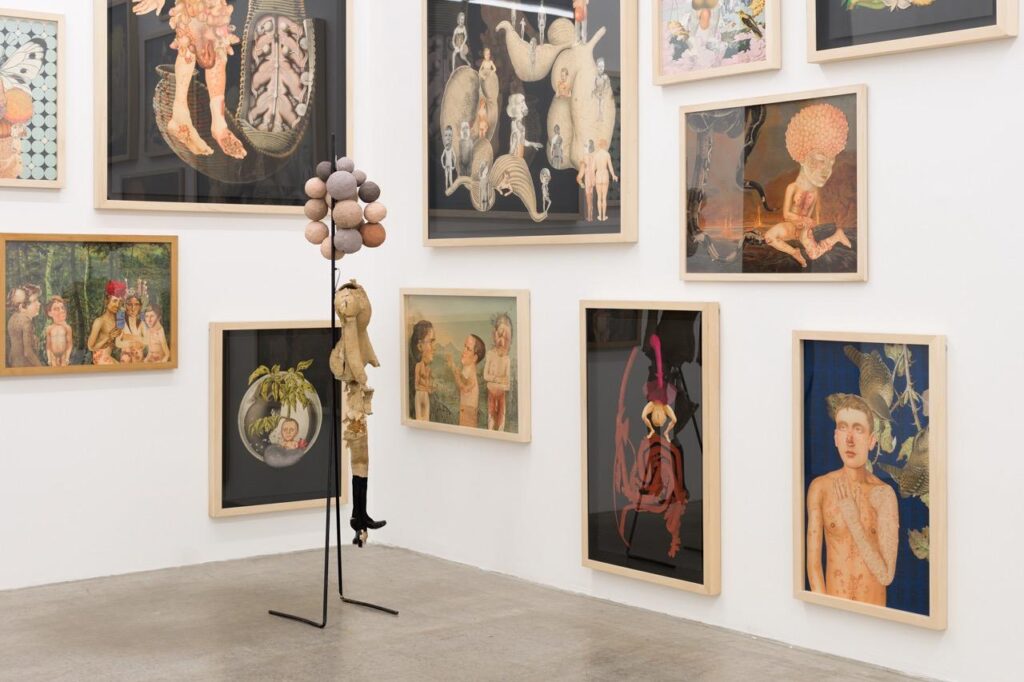
GALERIE3 Wien – Ines Doujak: SchwesterSchwester, Photo: eSeL.at – Joanna Pianka
Purchased items, gifts, found objects – Ines Doujak tirelessly collects things, which she assembles into ambiguously bizarre fantasy worlds. But her wild assemblages are by no means just cheerful inventions of form. They always deal with real-life, often explicitly political themes: ‘exploitative structures, classism and normative gender identities’, as Ramona Heinlein summarises in the text accompanying Doujak’s current exhibition at GALERIE3 in Vienna. And not to forget: female solidarity. This is exactly what is at the centre here. Entitled ‘SisterSister’, the exhibition features early analogue photographs, sculptures and collages that revolve around the idea of sisterhood as an alternative to fraternisation.
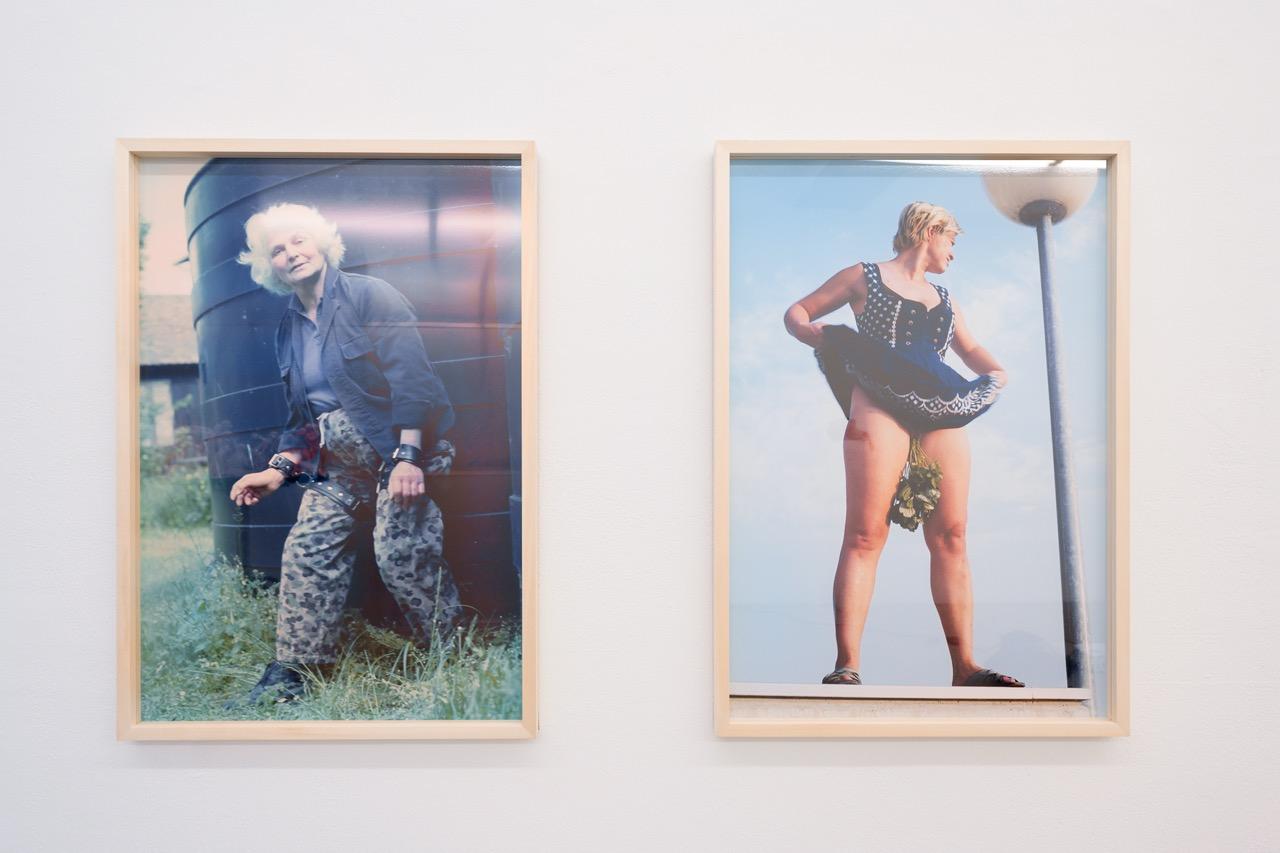
Ines Doujak, O.T. (Ms. Bometz), 2002. Fotography on Alu-Dibond.
Right at the entrance, crowds of small, pink-coloured, naked female bodies carved out of Styrodur stand in an arabesque ring on a dark platform. In various sexual acts, they intertwine and become a collective body. The early analogue photography series is about queerness, while the collages in the ‘Geistervölker’ series revolve around diseases. The series, which began in 2015, is based on motifs from historical biological charts.

Ines Doujak, O.T. (Geistervolk), since 2015. Collage
But how does the stage-like staging of the five dolls fit in with the sisters? Here, too, a ‘female perspective’ applies, through which everything is filtered, explains gallery owner Lena Freimüller. Here, it is mechanisms of oppression and marginalisation that interest Doujak. ‘Class Hatred’ can be read on the black and white clothing of the dolls. Labour protests, but also classism, i.e. discrimination based on social origin or economic position, resonate. According to the gallery employee, the rabbit in the hat refers to a socialist text; the red wooden shoes, known as ‘Klompen’ from Holland since the Middle Ages, refer to protests.
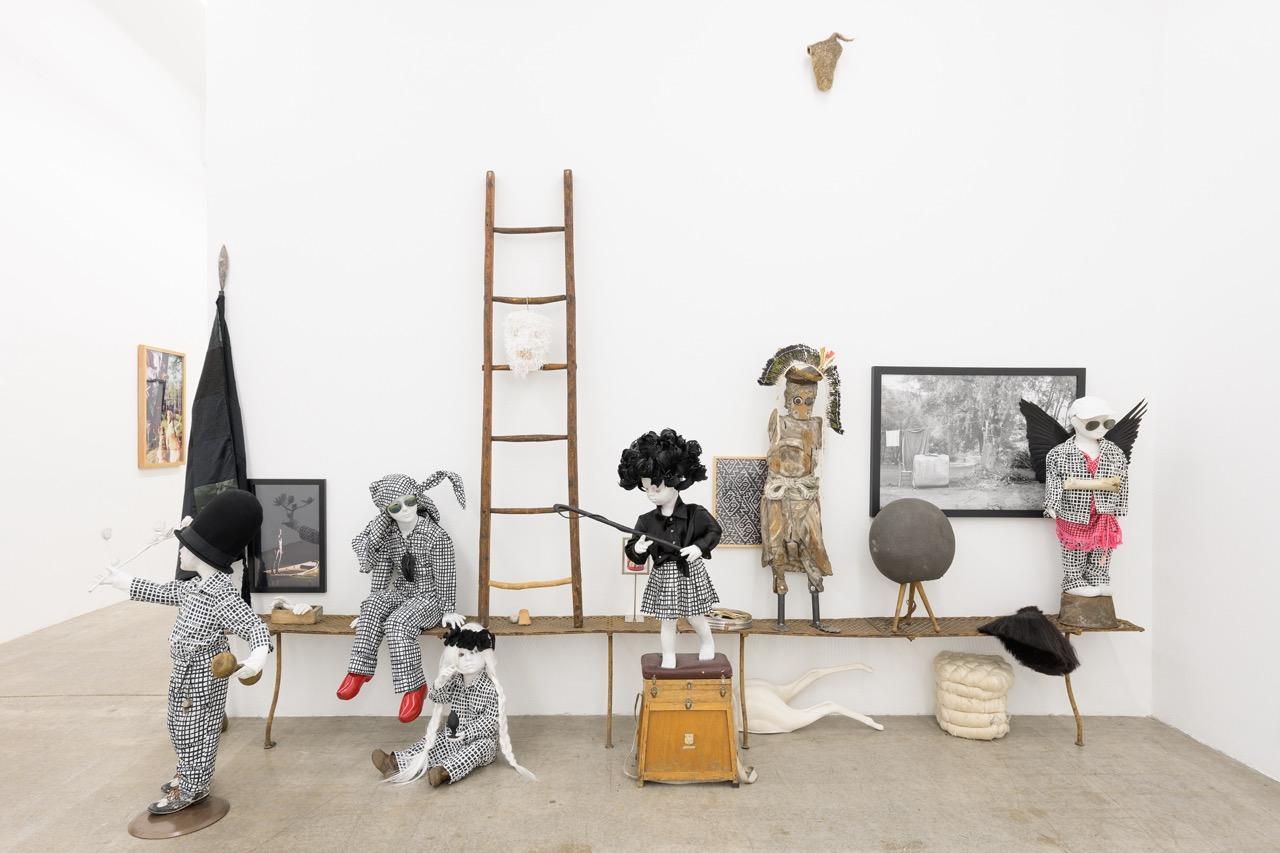
GALERIE3 Vienna - Ines Doujak: SchwesterSchwester (13.09.- 15.11.2024). Photo: eSeL.at - Joanna Pianka
Every detail in Doujak’s works is full of references and highly symbolic. Decoding them, however, requires explanatory consultations. For just as Doujak assembles her works from materials found everywhere, she also deals with an almost endless reservoir of references. The idea of a ‘sisterhood’, which initially seems so harmless and pleasurable, ultimately develops into a puzzle that points to all political levels.

GALERIE3 Vienna - Ines Doujak: SchwesterSchwester (13.09.- 15.11.2024). Photo: eSeL.at - Joanna Pianka

